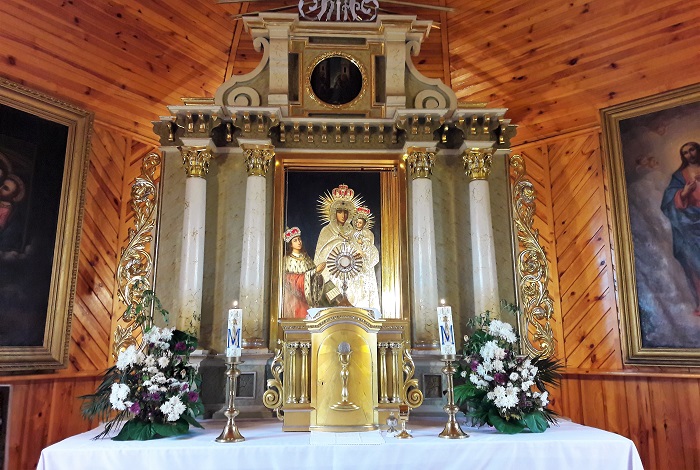VORANAVA DISTRICT

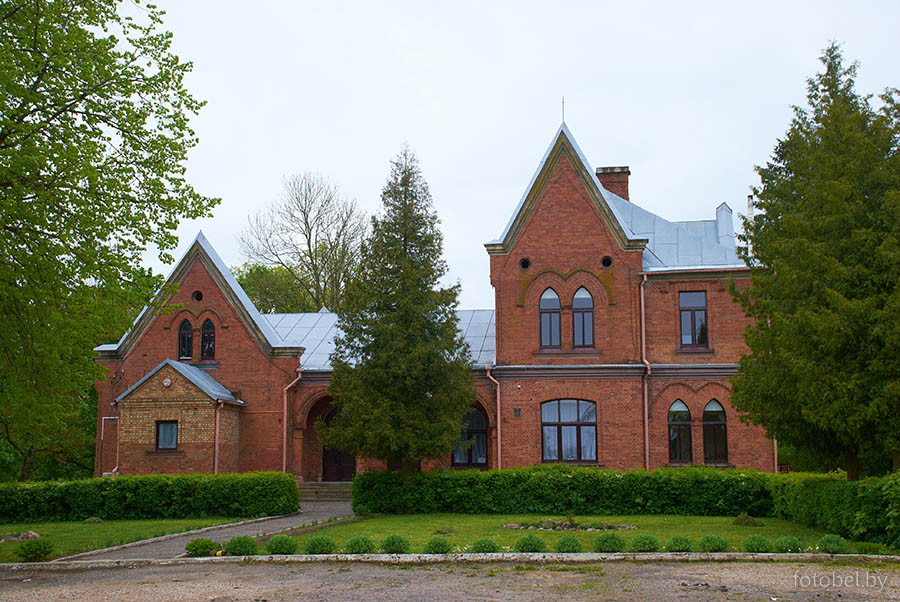
Quite rich and many-sided is estate culture in Grodno land. An interesting example of it can be found in village Boltseniki in Voranava district. This local estate house was built in the beginning of the 20th century in the highest north-east part of the park, which was founded in 19th century by the previous owner of the estate - count Stanislau Putkamier, a son of well-known Maria Verashchaka - the muse of Adam Mitskiewich genius.
The estate built in Neogothic style replaced an old wooden one-floored palace. Central brick building of the estate is characterized by dynamic, though asymmetric size and space composition with free-functional planning. Two different sized end parts of the house connect through the one-floored building with arch-column gallery at the front. Sharp-cornered shields and also pointed and coping windows in different combination give the building a special variegated outlook. This impression is forced by the complicated design of the roof. The estate house also makes an impression of fortress because of its stone-work walls, minimal decoration of arch windows, ledges and stone decoration of windows fretwork.
In front of the house there is a circle-shaped parterre. Two roads, one leading to the house from the east and another from the west unite the park zone, household yard and subordinate wings into one estate complex.
The park has free landscape planning and fits perfectly to slightly billowy relief which is united with stream Balatsyanka. Earlier there grew more than 100 species of trees. The park was often enriched with different exotic species according to their seasonal development, and their colors and size created harmony there.
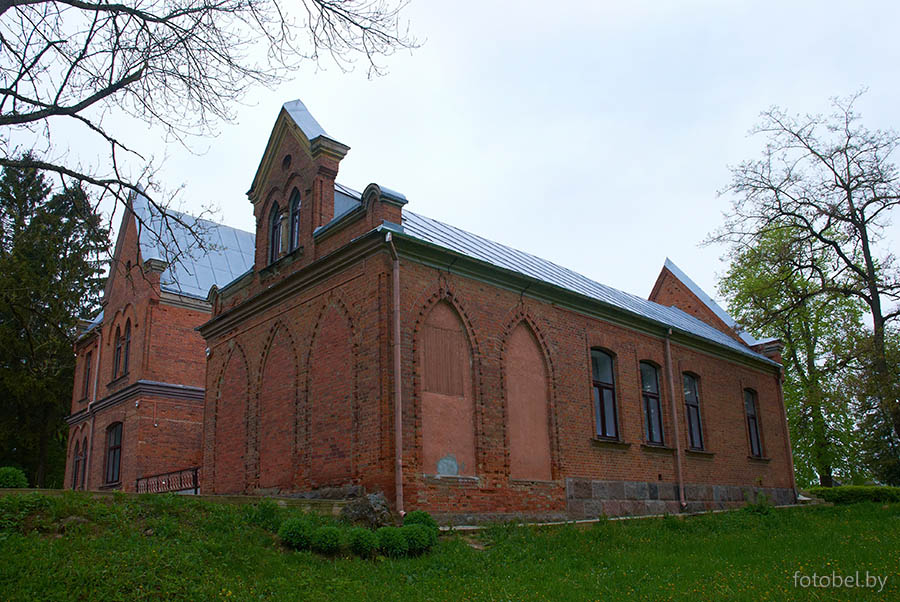
Not far from the estate there is one special place in Boltseniki - the so-called "Marylia's little wood". In his letters to Yan Charot, Mitskiewich mentioned this wood and his dates with the beloved while being the guest of the Putkamiers in 1822. A tragic climax of the romantic love happened in Boltsinki, and in remembrance of it Mitskiewich cut a cross on the stone which lies in the western part of the wood.
Not far from Boltseniki there is a quite big village Benyakoni with its must see St. John the Baptist Catholic Church. In this earlier wooden cathedral counts Putkamiers and their guest Adam Mitskiewich prayed.
In 1900-1906 on the place of an old wooden church a new brick one was built. The architecture of Benyakoni church has eclectic features of Neo-Baroque and Neo-Classicism. The temple is a three-nave basilica with two big three-leveled belfry-towers which end up with fine figured heads with spires made in Baroque style. The walls of the temple are decorated with pilasters, paneled niches, and many other elements of decor. The semicircular altar part of the church is surrounded by a lower building, and all this gives the building a special leveled look. The central nave is covered by the cylindrical vaulting, and the side ones - by cross-shaped vaultings.


A gravestone of Marylia Putkamier (Verashchaka) who died in 1863 remained at the old grave yard of the church.
Among the celebrate places of the Voranava land there is a unique monument of architecture of Belarus - fortress house in Gaytiunishki. This petite castle was built in 1611-1612 in the southern part of the village Gaytiunishki, on the left bank of river Zhimzha. This fortress house was built in accordance with the personal project of the owner of the place - the head of the royal buildings in Vilnia, who came from the Netherlands, Peter Nonhardt. He managed to put to practice the true sense of an old English proverb, which says "My house is my castle". And his compatriot, engineer and fortifier Van Dodin helped him to realize this project.

In the 16th-17th centuries foreign architects and fortifiers often came to Vilnia, from where they moved further to all the Great Duchy of Lithuania taking part in constructions of different importance. Peter Nonhardt came here the same way and got the right to own the estate in Gaytiunishki.
Symmetrical and rectangle planned two-floored building is covered with a high hipped roof. Thick (approx. 1,5 meters) front walls with almost no architectural decor have rectangle shaped window openings. On the corners there are four cylindrical shaped dome towers. In the centre of the main facade there is a rectangular shaped three-leveled tower. In the end of the 19th century a brick cube-shaped porch with three arch openings was attached to the tower. In 1970th a stone-staircase was attached to the porch, and one-floored brick building was attached to the yard facade.
The house has enfilade planning. Its central part is occupied by a vestibule group of buildings with two staircases. The main staircase connects the vestibule with the second floor, and the additional one leads to the attic. The ground floor is low with vaulting coveringsand has household function. In its small rooms there were kitchen, pantries and servants living rooms. Here was also a caserne for a small garrison. The living rooms were on the first floor and in projection tower. In the decor of this floor there stucco mouldings, varicolored furnaces and fireplaces were used.

Each of the towers had narrow loophole windows which allowed defenders to control the situation at the approach to the house from all sides. It is seen clearly that the owner cared much about good protection. Even a dancing hall and bedrooms had covered ways to the loopholes of the corner towers and secret staircases. Under the house there was a seven-roomed basement with well, which was used by the inhabitants and defenders. The whole territory around the house was planned and built as a fortification object. It was surrounded by a ditch filled with water and also an ground rampart. Unfortunately now all these fortifications of the petit castle are slightly noticed.
The owner of Gaytiunishki Peter Nonhardt died in 1633 and was buried not far from his castle in a crypt-chapel which was built by his only daughter Susanne. The chapel is an interesting monument of architecture which has elements of Renaissance and Gothic. Till nowadays there remained only ruins of Gaytiunishki chapel, parts of its northern and western walls.
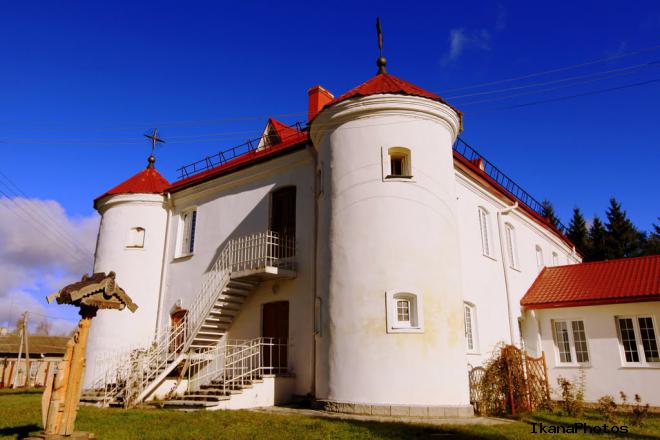
After death of Peter Nonhadt the castle passed to voivode of Navahrudak Yury Hrap-tovich, and later to the artist Johan Schreter from Vilnia who decorated the walls of several rooms with hunting-scenes and genre wall-paintings. Later the building was owned by the Putkamiers, the Osten-Sakets, and the Rymshas.
On the very border of Voranava district and Lida district in villages Zhyrmuny and Trakeli there remained wooden temples - monuments of architecture of the end of the 18th - the beginning of the 19th centuries.
The modern Holy Cross Discovery Catholic Church was built in Zhyrmuny in 1789 according to the project of J.Padchashynsky. It replaced the existed here earlier wooden temple which was founded in 1624.

The temple is rectangle-planned with a transept and a five-canted altar part. The main facade is decorated by two stone columns and ends with a pediment which has small eight-canted tower. The aim to embody the stone architecture in wooden architecture appeared in arch-formed windows and imitation of pilasters between them, which is not traditional for wooden buildings . The inner space of the church is divided by columns of Doric order into three naves. The main altar is decorated by entablature of Doric order and together with the whole building has evident features of Classicism.

The first wooden church in Trakeli village was built in 1500. Modern Most Holy Mary Catholic Church was built in 1809. During reconstructions which took place in the 20th century the walls of the church outside and inside were padded, the shingled roof was changed to a tinned one.
The temple consists of the rectangular-shaped framed vestibules of the same height, main space and apses which together make a gaunt solid monumental space covered with hipped roof. Two sacristies built in the place of connection of the main and altar parts are united with them by a gabble roof. The church has hall interior and flat ceiling. In the altar part there is a cylindrical-shaped vaulting. The altar is made in Neo-Baroque style.
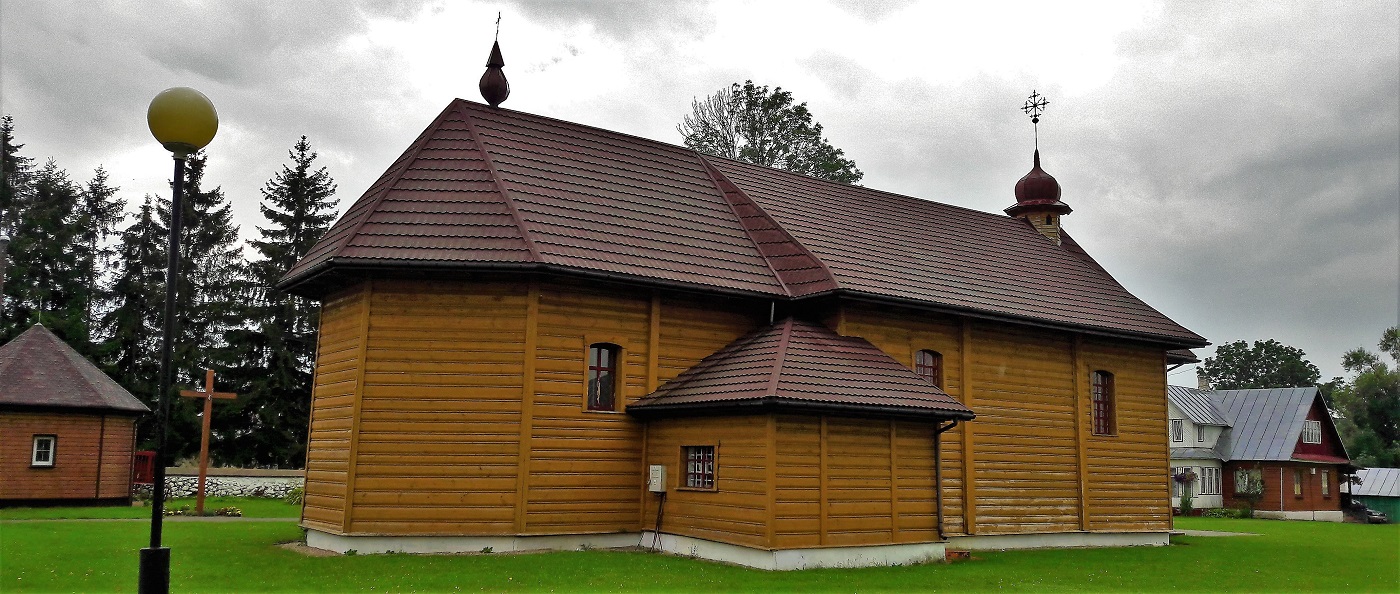
In Trakeli church there is a famous wonderworking icon of Trakeli Holy Mary (probably taken out from Vilnia in 1595). The picture of the Holy Mary with a Child belongs to the same iconographical type as the Holy Mary the Snowy. On the left from the Holy Mary on the icon one can see kneeled St.Kazimir who was painted in the second part of the 17th century on the separate canvas and later attached to the main painting. Probably this was connected with the canonization of king's son in 1664.
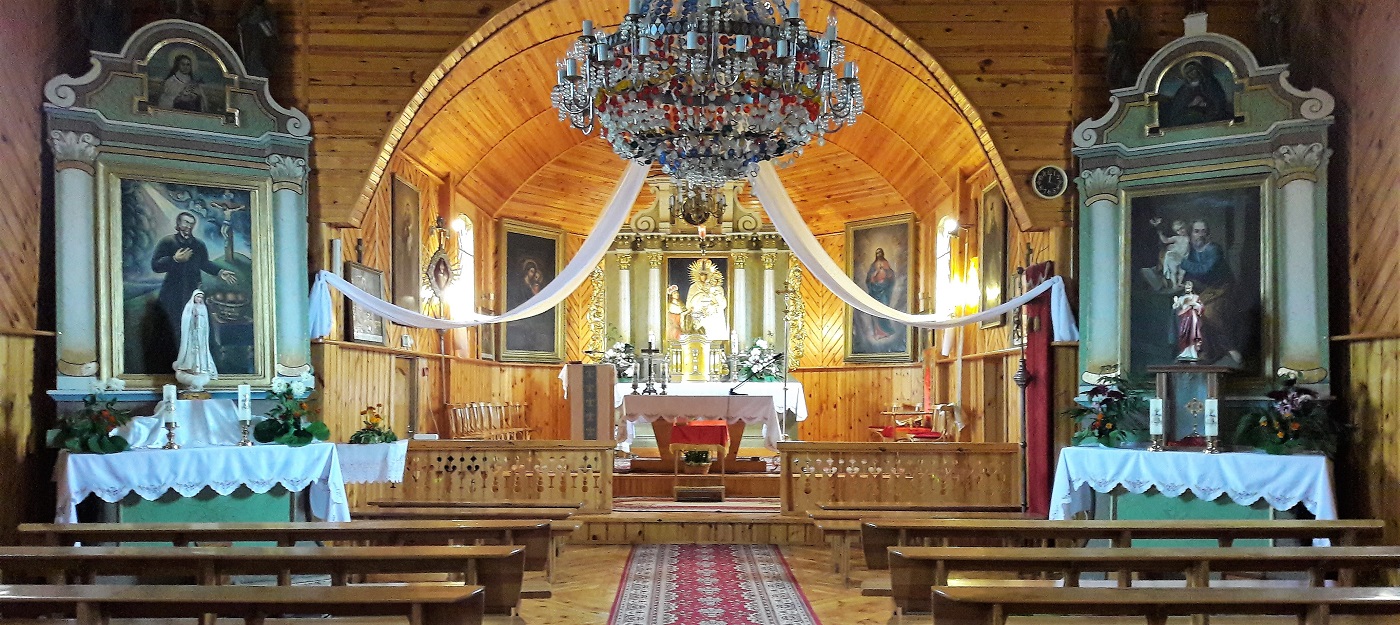
From 1994 Trakeli church became Sanctuary of Diocese. Every year in the first Saturday of July almost the whole Grodno Diocese comes to Trakeli and during several days decent Trakeli Paraphy becomes a spiritual center of the whole Grodno Catholic Cathedral.
